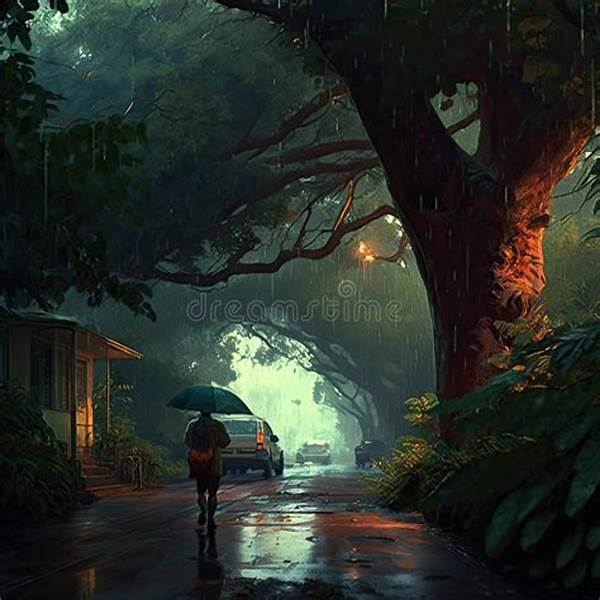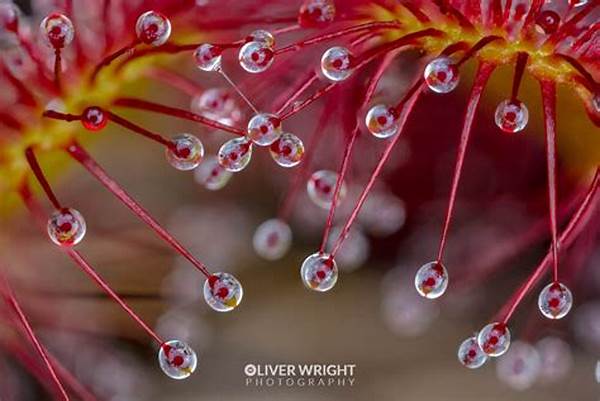Hey there, fellow photography enthusiasts! If you’re like me, you probably love capturing the great outdoors in all its glory. But have you ever felt that your landscape photos are missing that extra something? Well, you’re in the right place because today we’re diving into the world of high-quality filters for landscapes. Whether you’re a pro or just starting out, these filters can take your landscape photography to the next level.
Read Now : Top Free Watermarking Applications 2023
The Magic of High-Quality Filters
Alright, let’s talk about why these high-quality filters for landscapes are your new best friends. Imagine this: you’re out in the mountains or on a beach, and the lighting is just not doing your scene any justice. That’s where the magic of filters comes in. A good set of high-quality filters can transform the way your camera sees the world. Whether it’s a polarizer that cuts through glare and deepens the blues of the sky or a neutral density filter that lets you achieve that dreamy long-exposure effect, these little wonders are a game-changer.
But hey, it’s not just about the effects. High-quality filters for landscapes are also about protecting your lenses. They act like a shield against dust, scratches, and those pesky fingerprints that seem to appear out of nowhere. And trust me, when you’re out and about, protecting your gear is essential. Plus, with a robust filter, you’re not compromising on image quality—you’re enhancing it. So, next time you’re gearing up for an outdoor shoot, make sure you pack those trusty filters. Your landscapes, and your camera, will thank you!
Common Types of Filters for Landscape Photography
1. Polarizing Filters: These are the go-to for enhancing blues and reducing glare. High-quality filters for landscapes ensure your skies pop!
2. Neutral Density Filters: Ideal for long exposures, letting you capture stunning motion blur.
3. Graduated ND Filters: Balance the exposure between the sky and the ground.
4. UV Filters: Protect your lens without altering the image.
5. Color Filters: Add warmth or cool tones to your shots, perfect for creative effects.
Choosing the Right Filter for Your Landscape Needs
Choosing the right high-quality filters for landscapes can seem overwhelming with all the options out there. But fear not! Let’s break it down. The type of filter you need depends on what you’re shooting. For instance, if you’re into capturing those epic sunsets, a graduated ND filter will be your best bet for balancing exposure. On bright, sunny days, a polarizer can help enhance colors and minimize reflections, making your photos pop.
Another tip: invest in filters with a good reputation. You might find cheaper options that sound tempting, but quality matters when it comes to your precious images. Look for well-known brands that use high-quality glass to ensure your photos remain sharp and vibrant. And hey, it doesn’t hurt to check out reviews from fellow photographers to see what works for them.
When it comes to high-quality filters for landscapes, think of it as investing in your creativity toolkit. These tools open up possibilities that can ignite your passion for photography all over again. So next time you’re snapping photos, mix it up with a filter or two, and watch your landscapes transform into frames of beauty.
Why High-Quality Filters are a Must for Every Photographer
1. Enhanced Colors: Make those blues and greens pop like never before with high-quality filters for landscapes.
2. Improved Contrast: Achieve better contrast in your images, highlighting every detail.
3. Protection: Safeguard your lens from dust and scratches, extending its lifespan.
Read Now : Learn Advanced Retouching Techniques Online
4. Versatility: From sunrises to starry nights, adapt to different conditions seamlessly.
5. Professional Look: Elevate your images with that polished, professional finish.
6. Long Exposures: Capture that silky smooth water or cloud motion.
7. Balance Exposure: Achieve perfect exposure without post-processing.
8. Minimal Glare: Reduce unwanted reflections for clearer images.
9. Creative Effects: Experiment with colors and lighting for unique results.
10. Ease of Use: Simple to attach, and the results are instantly rewarding.
The Pros and Cons of Using Filters in Landscape Photography
Let’s keep it real, folks. Every tool comes with its set of pros and cons, and the beloved high-quality filters for landscapes are no exception. On the plus side, these filters can dramatically enhance your photos, giving them a professional look without the need for heavy editing. Filters like polarizers and ND filters let you play with light and shadows, bringing out the natural beauty of your landscape shots. Also, having a good filter can save your lens from potential damage, which is a big win!
However, it’s not all sunshine and rainbows. High-quality filters for landscapes can be a bit pricey, and if you’re just starting out, the cost might seem intimidating. Plus, it takes some practice to use them effectively—get it wrong, and you might end up with uneven exposures or strange color casts. Also, carrying extra gear might feel cumbersome during those long hikes in search of the perfect shot. That said, once you get the hang of it, the positives way outweigh the negatives. Just remember, practice makes perfect!
Wrap-Up: Are High-Quality Filters Worth It?
In the grand scheme of things, investing in high-quality filters for landscapes is definitely worth considering for anyone serious about photography. Sure, there’s a learning curve and an upfront cost, but the enhancements they bring to your images are undeniable. They open doors to creative possibilities that can often be restricted by natural lighting conditions or basic camera settings.
So, are high-quality filters for landscapes the magic wand you’ve been missing? For many, the answer is a resounding yes. These tools not only improve your image quality but also compel you to explore and experiment more with your photography. Whether you’re aiming to become a pro or simply want breathtaking shots for your next Instagram post, those filters are trusty allies in your pursuit of capturing nature in all its stunning detail. So go out there and explore the world through a new lens—literally!



